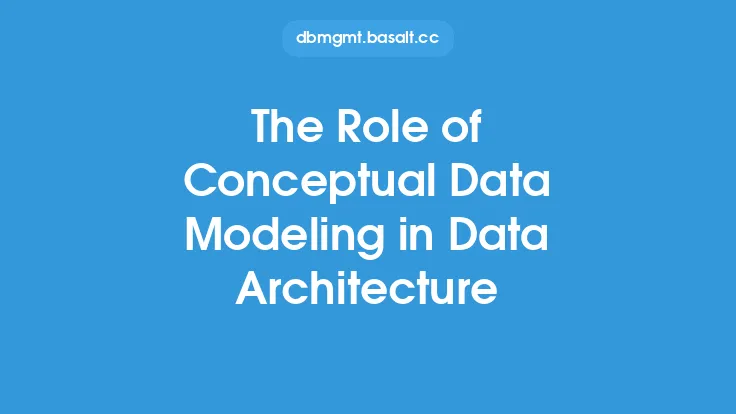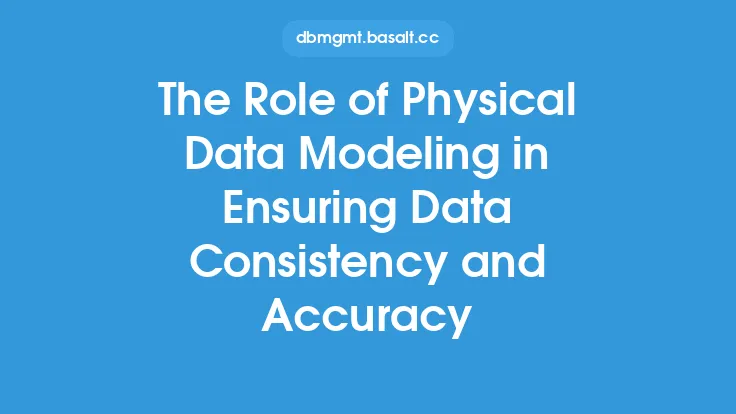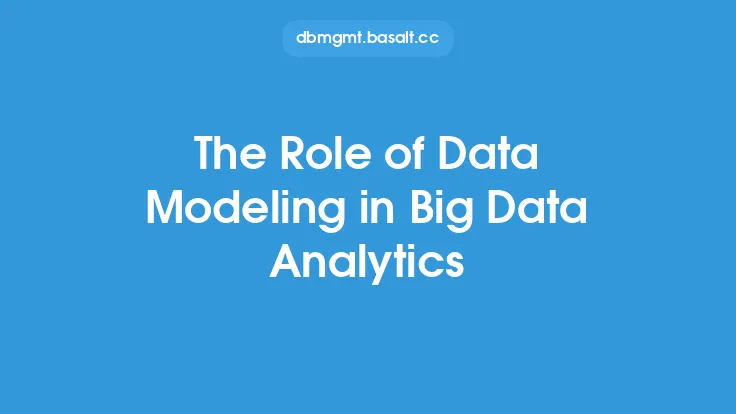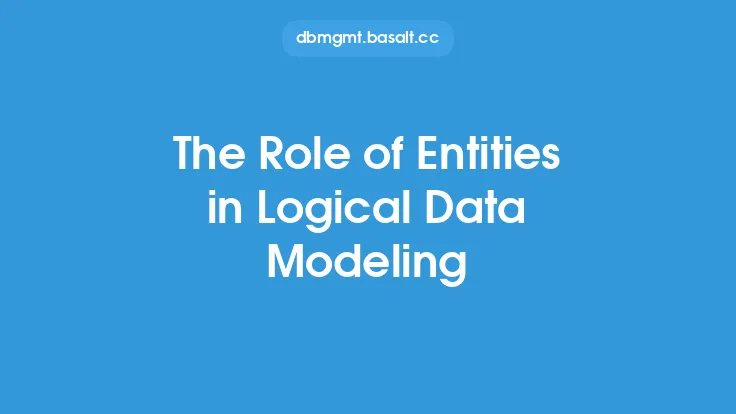Data abstraction is a fundamental concept in data modeling that enables the representation of complex data systems in a simplified and manageable way. It involves hiding the underlying details of a data system and only exposing the necessary information to the outside world. This concept is crucial in data modeling as it allows data modelers to focus on the essential features of a data system, while ignoring the non-essential details. In this article, we will delve into the role of data abstraction in data modeling, its benefits, and how it is applied in real-world scenarios.
Introduction to Data Abstraction
Data abstraction is a technique used to simplify complex data systems by exposing only the necessary information to the outside world. It involves defining a data model that represents the essential features of a data system, while hiding the underlying details. This technique is essential in data modeling as it enables data modelers to create a simplified representation of a complex data system, making it easier to understand, analyze, and maintain. Data abstraction is achieved through the use of abstract data types, which are data types that define the behavior of a data object, without exposing its internal implementation.
Benefits of Data Abstraction
Data abstraction offers several benefits in data modeling, including improved data simplicity, reduced data complexity, and increased data flexibility. By hiding the underlying details of a data system, data abstraction enables data modelers to focus on the essential features of a data system, making it easier to understand and analyze. Additionally, data abstraction enables data modelers to create a data model that is independent of the underlying data storage technology, making it easier to migrate to different data storage platforms. Data abstraction also improves data security by hiding sensitive data from unauthorized access.
Types of Data Abstraction
There are several types of data abstraction, including data hiding, data encapsulation, and data generalization. Data hiding involves hiding the underlying details of a data system, while exposing only the necessary information to the outside world. Data encapsulation involves bundling data and its associated methods into a single unit, making it easier to manage and maintain. Data generalization involves creating a general representation of a data system, which can be applied to different contexts. Each type of data abstraction has its own benefits and is used in different scenarios, depending on the requirements of the data system.
Applying Data Abstraction in Data Modeling
Data abstraction is applied in data modeling through the use of various data modeling techniques, including entity-relationship modeling, object-oriented modeling, and dimensional modeling. Entity-relationship modeling involves creating a data model that represents the relationships between different entities in a data system. Object-oriented modeling involves creating a data model that represents the behavior of a data system, using objects and classes. Dimensional modeling involves creating a data model that represents the relationships between different dimensions in a data system. Each data modeling technique uses data abstraction to simplify complex data systems and create a manageable representation of the data.
Data Abstraction in Relational Databases
Data abstraction is also applied in relational databases, where it is used to simplify complex data relationships. In relational databases, data abstraction is achieved through the use of views, which are virtual tables that represent a simplified version of a complex data relationship. Views are used to hide the underlying details of a data relationship, while exposing only the necessary information to the outside world. Additionally, data abstraction is used in relational databases to create stored procedures, which are precompiled SQL statements that perform a specific task. Stored procedures are used to encapsulate complex data logic, making it easier to manage and maintain.
Data Abstraction in Big Data
Data abstraction is also applied in big data, where it is used to simplify complex data systems that involve large volumes of data. In big data, data abstraction is achieved through the use of data lakes, which are centralized repositories that store raw, unprocessed data. Data lakes are used to hide the underlying details of a data system, while exposing only the necessary information to the outside world. Additionally, data abstraction is used in big data to create data pipelines, which are workflows that process and transform data from one format to another. Data pipelines are used to encapsulate complex data logic, making it easier to manage and maintain.
Best Practices for Data Abstraction
To apply data abstraction effectively in data modeling, several best practices should be followed. First, data modelers should identify the essential features of a data system and hide the non-essential details. Second, data modelers should use abstract data types to define the behavior of a data object, without exposing its internal implementation. Third, data modelers should use data modeling techniques, such as entity-relationship modeling, object-oriented modeling, and dimensional modeling, to create a simplified representation of a complex data system. Finally, data modelers should use data abstraction to create a data model that is independent of the underlying data storage technology, making it easier to migrate to different data storage platforms.
Conclusion
In conclusion, data abstraction is a fundamental concept in data modeling that enables the representation of complex data systems in a simplified and manageable way. It involves hiding the underlying details of a data system and only exposing the necessary information to the outside world. Data abstraction offers several benefits, including improved data simplicity, reduced data complexity, and increased data flexibility. It is applied in various data modeling techniques, including entity-relationship modeling, object-oriented modeling, and dimensional modeling. By following best practices for data abstraction, data modelers can create a simplified representation of a complex data system, making it easier to understand, analyze, and maintain.





